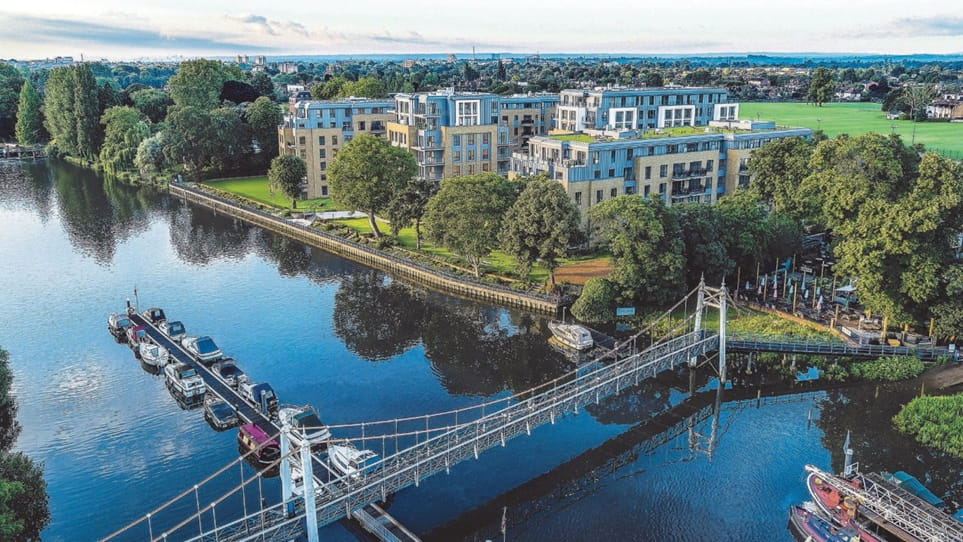Richmond South Teddington Change of Use: Understanding the Process, Opportunities, and Regulations
The Richmond South Teddington area, nestled along the banks of the River Thames in London, is renowned for its blend of scenic beauty, residential charm, and proximity to key amenities. As one of the most desirable locations in the capital, it is a hub of activity that attracts both commercial investors and residential developers. With this demand, the concept of Change of Use has become increasingly significant. Whether you’re a business owner looking to repurpose a building or a property developer exploring new opportunities, understanding the legal and practical aspects of changing the use of a property in Richmond South Teddington is essential.
In this article, we’ll take a deep dive into the Change of Use process for properties in Richmond South Teddington, exploring what it entails, the opportunities it presents, the key regulations to be aware of, and how to navigate the approval process.
What is Change of Use?
A Change of Use refers to the legal process of changing the designated purpose or function of a property from one use class to another. Under UK planning law, properties are classified according to a use class system, which groups buildings based on the type of activity they support. For example, a building used for retail purposes may fall under the Class E (Commercial, Business, and Service), while a residential property would be classified under Class C.
When an individual or business wishes to alter a building’s function, they often need to apply for planning permission to change the building’s use class. This process is essential to ensure that developments align with local planning policies and are in harmony with the surrounding environment.
Richmond South Teddington: An Overview of the Area
Richmond South Teddington is a vibrant area located within the London Borough of Richmond upon Thames. It boasts a unique combination of suburban tranquility and urban convenience, making it a sought-after location for both residential living and commercial ventures. The area features beautiful green spaces, including the famous Richmond Park, and is well-connected to central London via rail and road.
Teddington’s charm lies in its mix of period homes, riverside properties, and a growing number of modern developments. The local economy is supported by both established businesses and new enterprises looking to tap into the affluent and diverse population. Additionally, the proximity to the Thames, parks, and other natural landmarks adds a unique appeal for businesses related to hospitality, tourism, and leisure.
As the demand for space in this desirable area grows, Change of Use opportunities are becoming more prominent. Whether you want to transform an old retail shop into a café, convert a warehouse into office spaces, or turn a residential house into a guesthouse, the potential for creative redevelopment is substantial.
Understanding the Planning Use Classes in Richmond South Teddington
Before embarking on a Change of Use project, it’s important to familiarize yourself with the UK’s Use Classes Order. The system categorizes properties based on their primary function. Here are some of the key Use Classes that apply to properties in Richmond South Teddington:
- Class A (Shops, Restaurants, and Cafes): This class is divided into various sub-categories, such as retail shops (A1), financial and professional services (A2), and restaurants/cafes (A3). If you wish to turn a property into a restaurant, café, or shop, you would need to apply for a Change of Use within this class.
- Class B (Business Use): This includes office spaces (B1), light industrial use (B2), and storage (B8). If you plan to convert a property into a business or office space, this class would be relevant.
- Class C (Residential Use): Class C covers a range of residential uses, including family homes (C3), houses in multiple occupation (C4), and residential institutions (C2). Converting a commercial building to residential use would fall under this class.
- Class D (Non-Residential Institutions): This class includes uses such as medical centers, schools, and places of worship. If you are converting a property into a community or institutional building, you would need to apply for a Change of Use from the relevant commercial or residential class.
- Class E (Commercial, Business, and Service): A relatively new and broad category that replaced several previous classes (A1, A2, A3, B1). It includes a wide variety of commercial activities, such as retail shops, offices, and cafes. It is now easier for businesses to switch between different uses within Class E without the need for planning permission.
- Class F (Learning and Non-Residential Institutions): This class encompasses buildings used for education or training purposes, such as schools or daycare centers.
Understanding which Use Class a building currently falls under is crucial for determining whether a Change of Use application is required. Changing from one class to another may require formal planning consent, which is governed by the local council.
The Process of Applying for a Change of Use in Richmond South Teddington
The process of applying for a Change of Use in Richmond South Teddington typically involves several steps. Here’s an overview:
1. Pre-Application Advice
It is highly advisable to seek pre-application advice from Richmond upon Thames Borough Council. The planning department can provide guidance on whether the proposed change is likely to be approved, as well as any specific local planning policies or restrictions that may apply.
2. Submit a Planning Application
Once you have a clear idea of the proposed change, you will need to submit a formal planning application. The application will need to include various documents, such as:
- A completed planning application form.
- Site plans and drawings showing the existing and proposed layouts.
- A description of the proposed use and its impact on the surrounding area.
- Any other relevant reports, such as transport assessments, environmental studies, or heritage impact assessments (depending on the location and nature of the change).
3. Consultation Period
Once the application is submitted, there is typically a consultation period during which local residents, businesses, and statutory consultees (such as the Environment Agency or Historic England) can provide feedback. The council will assess the proposal against local planning policies, including any concerns related to traffic, noise, environmental impact, or changes to the character of the area.
4. Decision
After considering all the feedback and documentation, the council will issue a decision. If the application is approved, you can proceed with the change of use. If it is refused, you may have the opportunity to appeal the decision or amend your plans and resubmit.
Opportunities for Change of Use in Richmond South Teddington
The potential for Change of Use in Richmond South Teddington is vast, offering several exciting opportunities for property owners, developers, and investors. Some of the most popular change-of-use scenarios in this area include:
- Converting Commercial Buildings to Residential Units: With the demand for housing in London at an all-time high, converting underused or vacant commercial properties into residential units can be a lucrative option. This is especially true in areas like Teddington, where the mix of housing styles and proximity to green spaces make it an attractive place to live.
- Creating Mixed-Use Developments: The trend towards mixed-use developments, where residential, commercial, and leisure spaces are combined, is growing. In Teddington, developers may explore the possibility of converting old warehouses or shops into vibrant mixed-use spaces that include residential apartments, shops, and offices.
- Repurposing Industrial Spaces: Richmond South Teddington has a number of industrial buildings that can be transformed into creative spaces, offices, or even cultural venues. These spaces are often large and open-plan, ideal for businesses seeking flexible environments.
- Expanding Hospitality and Leisure Options: With its riverside location and proximity to parks and nature reserves, Richmond South Teddington presents an ideal location for restaurants, cafes, and leisure businesses. A Change of Use could allow an existing property to become a boutique hotel, a fine-dining restaurant, or a community center.
Key Considerations for Successful Change of Use Projects
Before embarking on a Change of Use project in Richmond South Teddington, keep the following key considerations in mind:
- Local Planning Policies: Ensure that your proposed Change of Use aligns with Richmond upon Thames’ local planning policies. The council may have specific guidelines to preserve the character of the area, protect heritage assets, or manage local infrastructure.
- Impact on the Community: Consider how your proposed use will impact the surrounding community. A business that generates heavy traffic or noise, for example, might not be suitable for a residential neighborhood.
- Costs and Funding: Changing the use of a building often requires significant investment, from renovations and compliance with building regulations to paying for planning fees. Make sure to budget accordingly and explore funding options if necessary.
Conclusion
The Change of Use process in Richmond South Teddington offers a wealth of opportunities for developers, business owners, and investors looking to transform existing properties into something new. However, understanding the legalities, navigating the planning process, and adhering to local policies are all essential for ensuring the success of such a project. By doing thorough research and seeking professional advice, you can unlock the full potential of a building and contribute positively to the development of this beautiful and vibrant area of London.



No responses yet